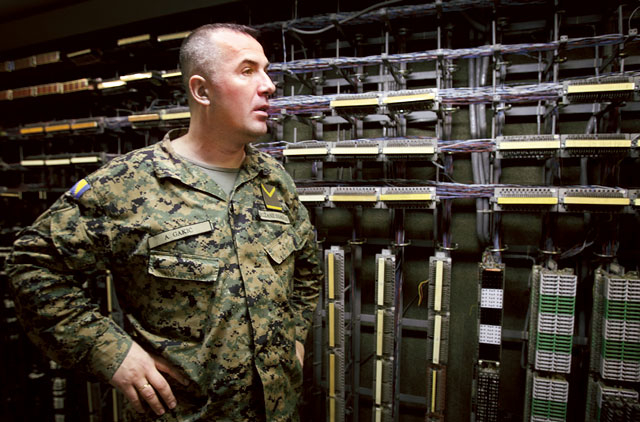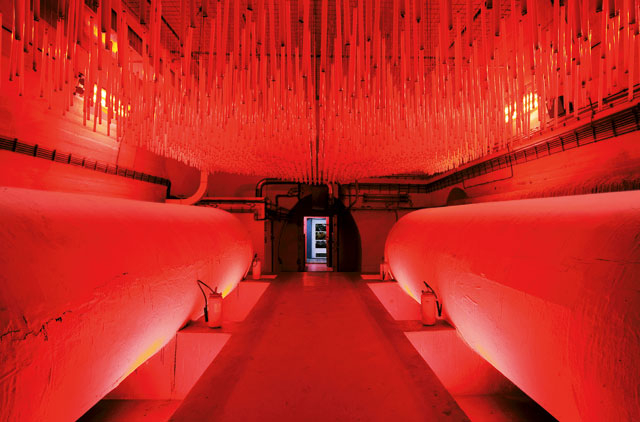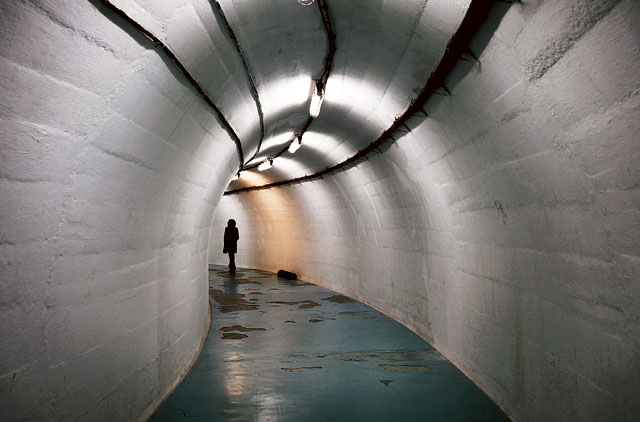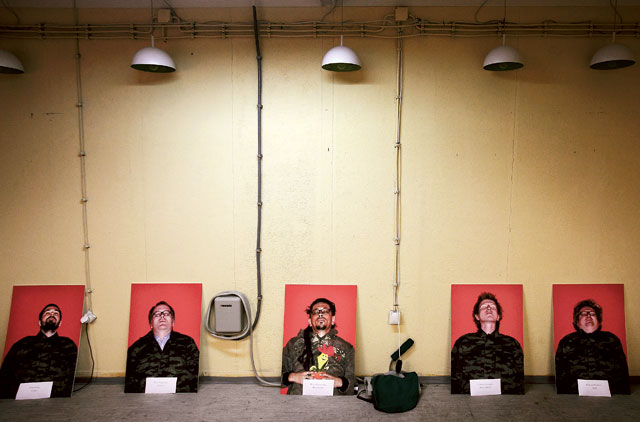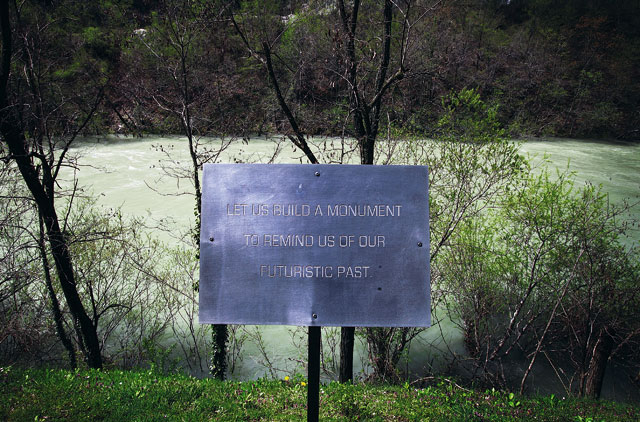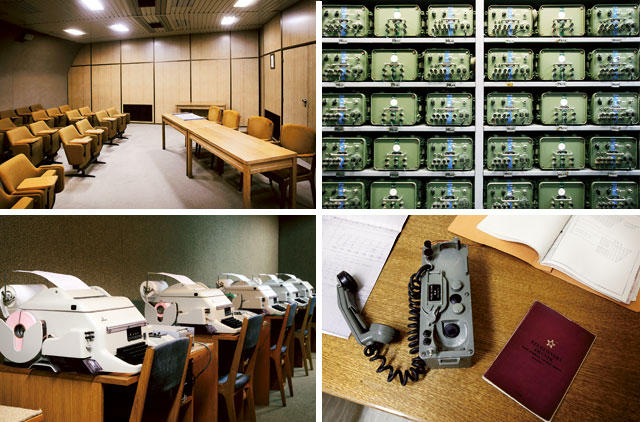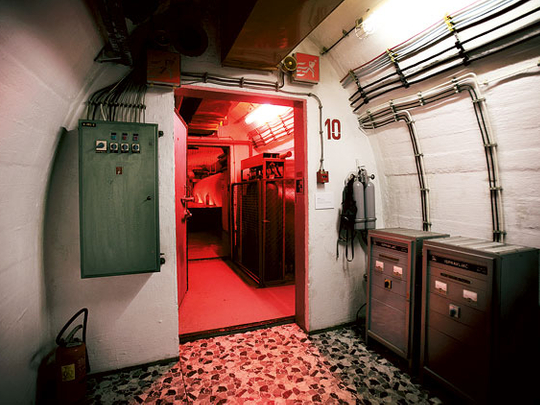
In the ranking of top-secret military sites in the countries that comprised the former Yugoslavia, bunker number D-0 in the town of Konjic, 50km south-west of the capital Sarajevo, was the most important.
To get to D-0 from Sarajevo it’s just an hour’s drive and as cheap as €50 (Dh230) if you can find a cooperative taxi driver. After passing the village of Konjicsi, we continued along the Neretva River for a few miles, then crossed a bridge where we were faced with a barrier and a nondescript house. Displaying the documents authorising our visit enabled us to reach an even more anonymous second house that hides the entrance to the Atomska Ratna Komanda (ARK), the bunkers built for Josep Broz Tito, former leader of Yugoslavia, even though he never so much as set foot there.
A colossal building, its construction began in 1953 and ended in 1979, a year before Tito’s death. The whole complex sprawls across 611 square metres, dug 300 metres into a mountain. The cost of this work was astronomical – nearly $5 billion (Dh18 billion). It was created to save the entire Yugoslavian ruling class from a nuclear attack. It was built to withstand an attack with bombs up to 25 kilotons – far more powerful than the ones that were dropped on Hiroshima.
In the event of an attack, the bunker could accommodate President Tito, his family and his closest collaborators – about 350 people. From here it would be possible to govern the country, or what was left of it. It’s a kind of labyrinth, a complex of residential areas, conference rooms, offices, halls for strategic planning, a ‘presidential bloc’ and other sections. The construction of the tunnel was done in total secrecy. Teams of workers often changed so no one would know too much about the bunker, and workers were brought there blindfolded so they wouldn’t know its exact location.
Once it was finished, only four generals were allowed to enter. Sixteen soldiers took care of maintenance: nine Serbs and seven Bosnian Croats. When Yugoslavia fell apart just before the war in Bosnia, Serbs and Croats largely dismantled military installations in this region with its mountainous and little-used routes.
What could not be broken down, like the largest underground military airport near Bihac, the Serbs have blown up. In 1992 the Serbian high command in Belgrade gave the order to destroy the bunker in Konjic. It was a Bosnian military guard who sabotaged the operation, saving everything. Since then, the building, with all its signs and symbols, its furnishings and its instruments, has been fully preserved.
Visiting the bunker now, the first thought that comes to mind is that this construction is a huge monument to Tito. We are greeted by large colour photos of the president in his black uniform with gold badges and a chest covered with medals. In Bosnia and Herzegovina respect for his memory is preserved, even today. The main street of Sarajevo is still devoted to him, and 12e years ago when the government planned to change the name, there were street demonstrations to prevent it.
The enduring respect for the Marshal of the Bosnians is witnessed by one of the most popular bars in the capital, which in addition to bearing his name, is furnished only with old Tito memorabilia. Statues of his bust are on display, as are calendars, old magazines and newspaper articles, stamps, coins and bags of sugar. All these objects, however, cannot compete with the relics housed at the Atomska Ratna Komanda bunker. Here, admirers and other visitors will find not only what would have been his bed and a bathroom complete with bidet and the Presidential PBX – an internal phone exchange – but also his wife’s wig, made of hair donated by women from across the whole of Yugoslavia.
As well as Tito nostalgia there are also some examples of retro design, with everything firmly dated and perfectly preserved. Furniture covered with Formica. Pristine toilets manufactured in Banja Luca, Bosnia-Herzegovina’s second-largest city. The conference room with 72 seats upholstered in a mustard shade. Two air conditioning systems – one that was set aside just for Tito’s accommodation – that even today maintain a temperature of 23-24 degrees and 60 per cent humidity. Huge shelves holding gaskets, screws, drills, light bulbs and hammers. There are also old tape recorders and dozens of Siemens telexes.
There is an old contraption that allows you to record and play back your voice, an ancestor of modern recorders. An array of vintage analog technology is on display, most notably, the ‘red phone’, which is seen in so many spy movies. These telephones are considered the true icons of Tito’s Yugoslavia. They were produced by the Iskra (‘spark’) company, an electronic equipment manufacturer in Slovenia from the Sixties to the Nineties.
The bunker is now a venue for a biennial of contemporary art. Prompted by the letters in the code of the bunker, the project has been dubbed D-0 ARK Underground. There is irony in the fact that the bunker, designed and built strictly to accommodate a small circle of the elite, has been reborn and is open to all.


